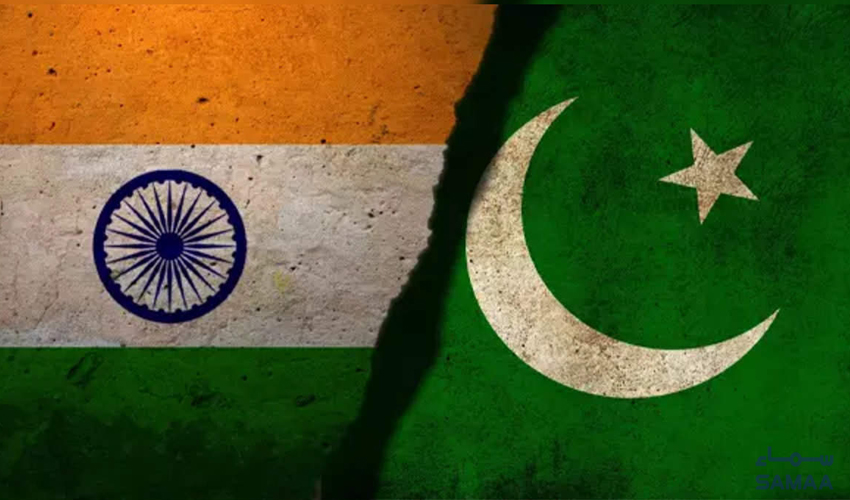Imagine two siblings, born into the same family, raised within the same walls, but who, as adults, seem to be on opposing sides of the world. This is, in a way, the story of Pakistan and India. Though born from the same British-ruled territory and sharing a rich tapestry of history and culture, they have often been portrayed as deeply divided nations. But are the differences truly as stark as the headlines suggest, or lies a deeper layer of kinship beneath the surface? Let’s explore the complex relationship between these two neighbors, moving beyond the stereotypes and seeking understanding.

Image: www.samaa.tv
This exploration is not meant to downplay the complexities and tensions that exist between India and Pakistan. The historical tensions, political differences, and ongoing conflicts are real and have had a profound impact on the lives of millions. But delving beyond the narratives of animosity and conflict, we find a story of shared heritage, cultural similarities, and a potential for greater understanding.
India and Pakistan: A Shared Legacy
The partition of India in 1947 was a watershed moment, carving a new map of the South Asian landscape and leaving a lasting impact on the lives of millions. It was a moment of immense upheaval, fueled by religious and political divisions, resulting in large-scale displacement and violence. The creation of Pakistan, a separate nation for Muslims, and the persistence of a primarily Hindu India, was a complex and controversial event. However, it’s crucial to remember that both India and Pakistan are products of the same historical trajectory, sharing a common heritage rooted in ancient civilizations and the colonial era.
Shared Cultural Roots: Beyond the Divide
The cultural tapestry of both nations is woven with threads of shared traditions, customs, and artistic expressions. From the vibrant melodies of classical music to the rich culinary heritage, the connections are undeniable. Whether it’s the beloved Bollywood films, enjoyed in both countries, or the timeless stories of ancient epics, like the Mahabharata and Ramayana, that resonate through generations, the cultural similarities are a testament to a shared past. Even in their languages, Hindi and Urdu, derived from the same ancient language, Sanskriti, bear striking resemblances.
The Ongoing Challenge of Identity: Navigating Shared Heritage
However, the complexities of shared heritage are not without their challenges. The history of partition casts a long shadow, shaping national identities and fueling a sense of otherness. The ongoing political tensions, territorial disputes, and historical grievances play a significant role in shaping public perceptions and fostering a sense of disconnection. The media, often fueled by nationalist sentiments, amplifies these differences, contributing to a cycle of mistrust and suspicion.

Image: www.dailyexcelsior.com
Bridging the Gap: A Search for Common Ground
Despite the historical baggage, there have been moments of cooperation and reconciliation. The shared threat of terrorism, the need for economic collaboration, and the desire for regional peace have pushed both nations towards dialogue and cooperation. People-to-people exchanges, cultural programs, and academic collaborations have played a significant role in fostering an understanding of shared values and commonalities.
Finding Common Ground: Beyond the Headlines
The challenge lies in moving beyond the narrow lenses of political narratives and media representations to appreciate the human connections that bind these two nations. When we look beyond the headlines and engage with diverse perspectives, a different picture emerges – one of shared humanity, cultural richness, and a potential for meaningful dialogue.
The Power of People: Fostering Understanding
Even amidst political tensions, there are countless individuals who carry a deep respect for the cultural heritage of their neighboring nation. Artists, musicians, writers, and ordinary citizens have played a significant role in bridging the divide through their work, collaborations, and interactions. It is through these everyday acts of connection that a more meaningful understanding of each other begins to flourish.
Looking Forward: A Call for Empathy and Understanding
The future of India and Pakistan hinges on a collective effort to address the historical wounds and construct a new narrative based on mutual respect and understanding. By embracing the shared heritage, acknowledging the complexities of the past, and fostering a dialogue of empathy, we can pave the way for a more peaceful future for both nations. The task is not easy, but the rewards of a shared future are worth striving for.
Breaking the Cycle of Division: Leading with Empathy
The journey towards reconciliation requires a commitment to understanding, not just between governments and political leaders, but also between individuals. Each individual has a role to play in breaking the cycle of division and fostering an environment of empathy, respect, and tolerance.
Are Pakistan Indian
Turning Page: A Shared Future
This is not about erasing the differences or pretending that they don’t exist. It’s about acknowledging the complexity of the relationship and seeking common ground. It’s about recognizing that the shared history and cultural connections offer a powerful foundation for building a future of peace, cooperation, and prosperity for both India and Pakistan. The challenge lies in choosing to build bridges of understanding rather than walls of division.






